The history of mammals in Ireland is complicated, with extinctions of large mammals in the past and management problems in the present. Will it come full circle with the reintroduction of some of the long-gone large mammals in the future?, asks Virginia Morera-Pujol, a postdoctoral researcher in the School of Biology and Environmental Sciences
M is for Mammal
Mammal diversity in Ireland is quite impoverished with respect to that of Britain and, even more, that of the continent. But before you start pointing fingers, no, this one is not entirely our fault! In this case, you can also partly blame the geography and geological history of northern Europe.
During the last glacial maximum, when ice covered the island, most land mammals retreated to the few areas in Europe that offered refuge from the ice. As the ice started to melt, the more cold-tolerant species made it back into Ireland either through temporary land bridges, over the ice sheets, or island hopping through the ridges and mounds that emerged as the sea level changed. However, Ireland soon became fully disconnected from Britain and the mainland, and therefore the influx of mammals reconquering the thawing land stopped.
From then on, being transported by humans (voluntarily or not) was the only means for terrestrial mammals (at least those that can’t fly) to arrive in Ireland. For this reason, Ireland has lower numbers than Britain, and certainly lower than countries in the European continent of comparable size and latitude (such as Belgium or the Netherlands) for most groups of land mammals.
However, we humans are not entirely off the hook as Ireland certainly used to have more mammal species than it currently has. We have evidence of first stable human settlements in Ireland from 12,000 years ago and, since then, societies evolved to hunter gatherers and then farmers, and affected our ecosystems in a variety of ways. For instance, humans preferentially hunted large mammals, or actively targeted predators, which already occur at naturally low densities. In addition, the expansion of farming caused widespread landscape changes such as the replacement of forests with agricultural lands, making those species even more vulnerable. Through those processes, we have lost species such as the Irish elk, the lynx, the brown bear, and the wolf, among others.
With time, we realised the effects our actions had on the environment and put in place action plans to protect and recover the most endangered species. The development and growth of commercial forestry in Ireland has serendipitously accompanied these efforts, providing a woodland habitat similar to (but definitely not the same as) what was lost with the development of Irish agriculture. Strict protection plans and an increase in forested surface are behind the spectacular recoveries of species such as the lesser horseshoe bat and the pine marten, now not such an uncommon sight in Irish forests.
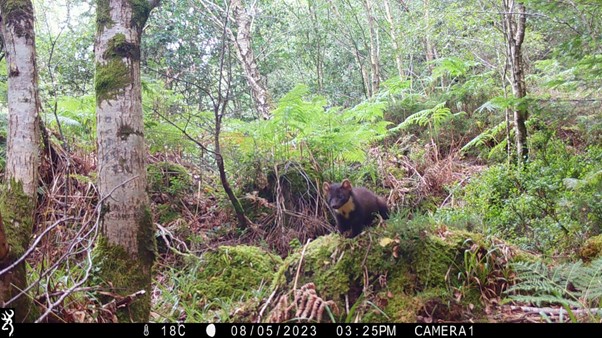
Pine marten captured by a trail camera in Clara Vale, Co. Wicklow, in the framework of the bioDEERversity project, aimed at evaluating the effect of deer overabundance on biodiversity. Credit: UCD Wildlife Ecology and Behaviour Lab.
Although we have managed to partially reverse our effect on some species through management and conservation plans, there are some other species whose populations are still very much unbalanced due to human activities, and the best example of that is definitely the sika deer. Of the four species of deer in Ireland, three were introduced, with only red deer being native. From the introduced species, the one that has caused more intense human-wildlife conflict is sika deer. Sika deer were introduced to Ireland in 1860 by Lord Powerscourt to his Wicklow estate, where he also had red deer. Subsequent translocations from the Powerscourt estate spread the species to other parks and estates across the island, and escapes from those parks and estates originated the entire current sika deer population of Ireland.
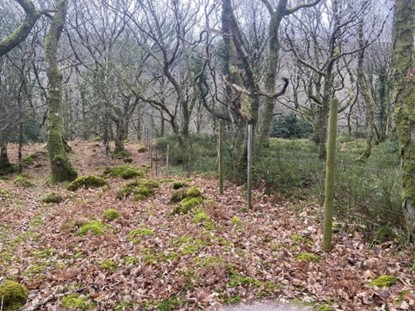 |
|
Deer-fenced property showing the effect of deer grazing on understorey vegetation in Co. Wicklow. Credit: Colin Brock. |
Wild populations of sika deer have grown since then, and currently occur at very high densities particularly in County Wicklow. The reasons for this population explosion can be found in a combination of farmland, commercial forestry, and uplands. These provide deer with a mosaic of food and protection with unparalleled boosting effects in the populations of a shy, grazing species like the sika deer. Their effects on biodiversity and commercial forestry are quite severe, as they trample and graze on understory vegetation and eat the apical shoots of seedling trees.
In this regard, we are about to embark on a project, funded by the Department of Agriculture, Food, and the Marine, to evaluate deer abundances, their diet and behaviour, and their effect on biodiversity in different areas of the country with contrasting deer abundances. Together with teams in Maynooth University and Atlantic Technological University, we will combine diverse methodologies, from genetic analyses to camera traps, to try and answer the question: “how many deer are too many deer?”. As part of the team in the lab of Wildlife Ecology and Behaviour in UCD, we will focus on the use of camera traps to study the activity patterns of each species (such as at what times of the day they are more likely to feed), to try and understand their behaviour, and whether the coexistence of more than one species can lead to increased forest damage.
Another example of how we have failed to protect nature is the situation of badgers’ populations in Ireland. Badgers are protected by both Irish and European laws, to shield them from the cruelties of badger baiting and illegal prosecution that they were (and in some cases still are) subject to. However, there is also an official badger culling programme put in place by the Department of Agriculture, Food, and the Marine in an effort to reduce the spread of bovine tuberculosis (bTB), of which they are a vector. Efforts are currently being made to replace the culling by a vaccination and release programme, but this has been extended to only 28% of the surface of Ireland so far. Meanwhile, the exact mechanisms by which badgers can transmit bTB to cattle are still unknown, and the efficacy of reactive badger culling to reduce bTB prevalence is questionable.
In my current research project, I am using the data produced in the context of this culling programme to model the distribution of badgers and their setts across the country, to then try and figure out if bTB outbreaks occur more often in areas with high badger density.
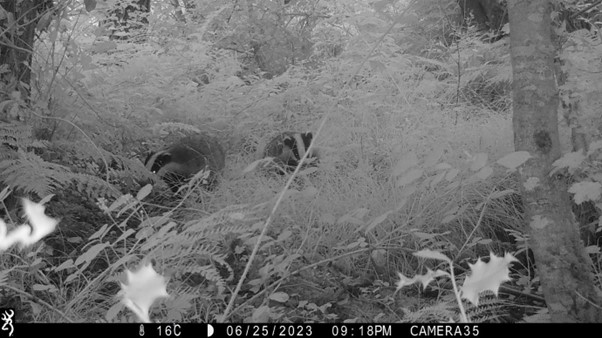
Couple of badgers captured by a trail camera in Ballardbeg, Co. Wicklow. Badgers are social animals that live in family groups in underground burrows, and are active mainly at night. Credit: UCD Wildlife Ecology and Behaviour Lab.
The research conducted in the two projects mentioned above aims at providing data that can be used in science-based management programmes to keep these and other populations of mammals in balance. But, what about those long-gone species? Will the wolf, the bear, or the lynx ever roam the Irish landscapes again? Although the image certainly is attractive, and one can daydream about what the Irish landscape would look like after the reintroduction of these top predators, things in ecology are never simple.
Although large mammals might be returning to areas in continental Europe they had been absent from for years, this process will, by necessity, be mediated by human intervention if it is ever to happen in Ireland (unless a lot of these animals become very good swimmers). But, is the island ready for it? Reintroduction of large mammals is a complex process that requires a lot of previous research, public engagement, and changes in policy and land management. Ireland is currently an agroforestry mosaic, with most of the land taken over by farms and commercial forestry, and livestock has a prevalent position even inside National Parks. Crucial changes are needed in the policy approaches to conservation and nature restoration in the country, as well as a shift in the public view of the role of livestock in the Irish economy, before the subject of reintroduction can even be brought up.
Essay first published 31 July 2024.
About the author
Virginia Morera-Pujol is a postdoctoral researcher in the School of Biology and Environmental Sciences in UCD. Her work focuses on the application of complex statistical modelling techniques to the study of animal movement and their distribution and abundance. Within the lab of Wildlife Ecology and Behaviour she has worked on the distribution of both deer and badgers in Ireland, with profound implications for policy and management.
About the series
The A-Z of Environmental, Climate and Sustainability Research is a new series of short essays by UCD postdoctoral and postgraduate researchers, technical and research support staff, about their work. The series is developed and curated by the Earth Institute Associate Member Committee led by Hannah Gould, a PhD student at BiOrbic and the UCD School of Architecture, Planning and Environmental Policy, and Earth Institute Communications and Engagement Officer Liz Bruton. If you'd like to submit a piece for the series do get in touch!
Find out more about the Anthropocene with Nick Scroxton, Bees with Katherine Burns, Cannabis with Caroline Dowling, Degrowth with Ciarán O'Brien, Education with Georgina Fagan, Finance with Shane McGuinness, Gaia with Federico Cerrone, Hydrometry with Kate de Smeth, Innovation with Hannah Gould, Justice with Lauren Minion, Kelp with Priya Pollard, Landscape part 1 with Tomas Buitendijk, Landscape part 2 with Amy Strecker and Amanda Byer, Reusing microbial ‘bathwater’ for sustainable drug production with Laura Murphy, and Mammals with Virginia Morera-Pujol in our latest essays.
Further reading
Lysaght, L. and Marnell, F. (Eds) (2016) Atlas of Mammals in Ireland 2010-2015, National Biodiversity Data Centre, Waterford. PDF version.
Montgomery, W. I., Provan, J., McCabe, A. M., & Yalden, D. W. (2014). Origin of British and Irish mammals: disparate post-glacial colonisation and species introductions. Quaternary Science Reviews, 98, 144-165.
Brock, C., Morera-Pujol, V., Murphy, K. J., Nieuwenhuis, M., & Ciuti, S. (2023). Predicting forest damage using relative abundance of multiple deer species and national forest inventory data. Forest Ecology and Management, 550, 121506.
Wolf, Christopher, and William J. Ripple. (2018). Rewilding the world's large carnivores. Royal Society open science 5, no. 3: 172235.
Pereira, H. M., & Navarro, L. M. (2015). Rewilding European landscapes (227 pages). Springer Nature.
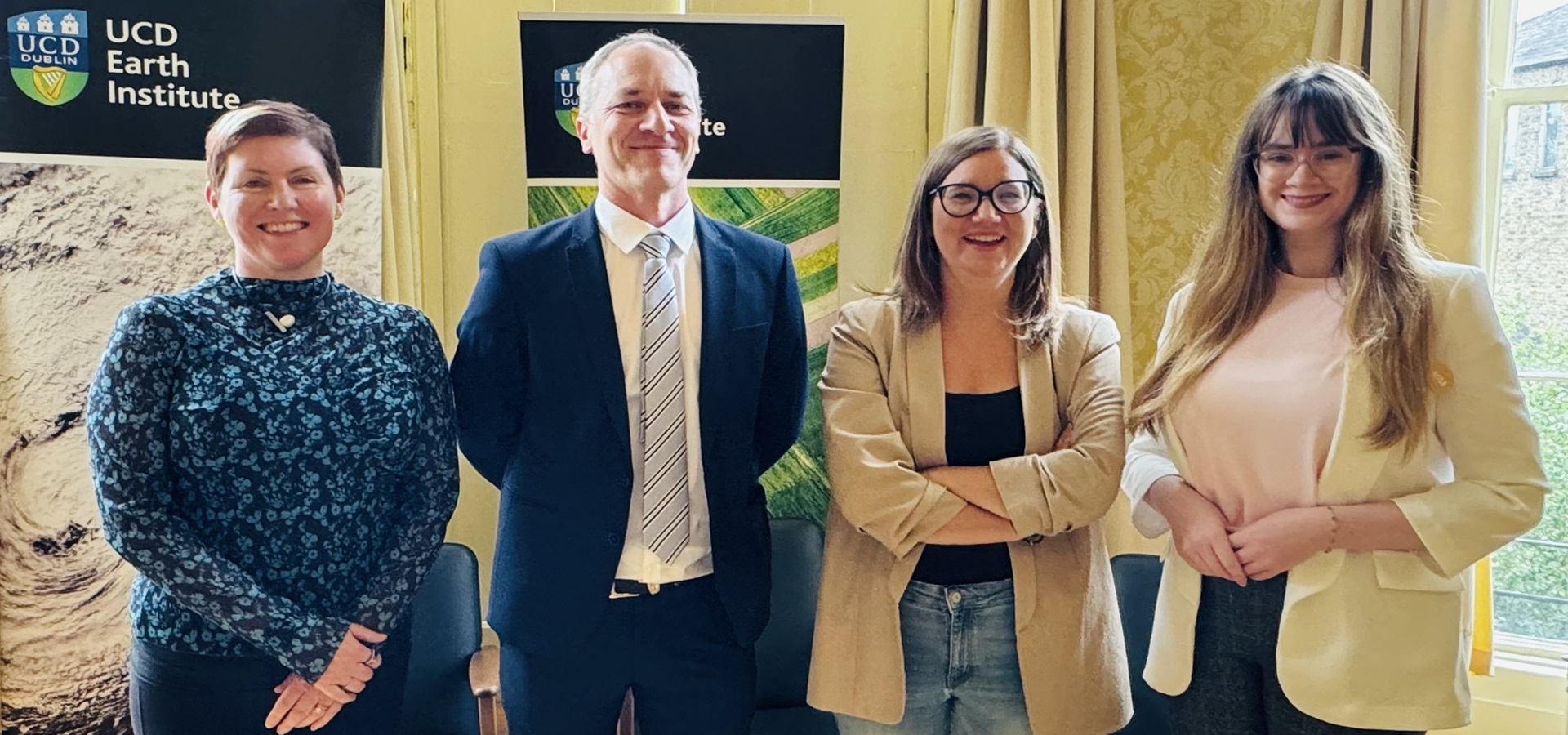
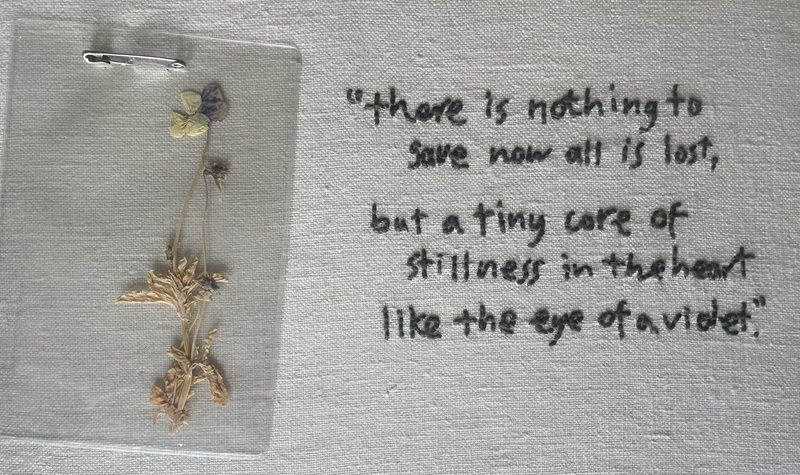
.jpg)